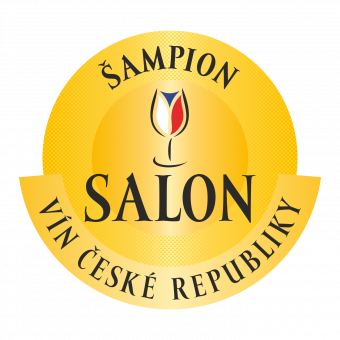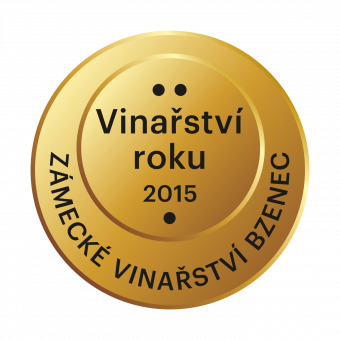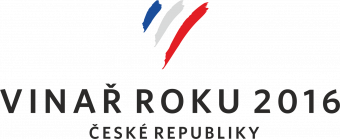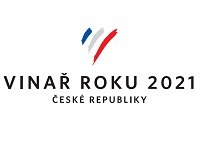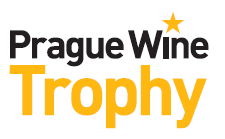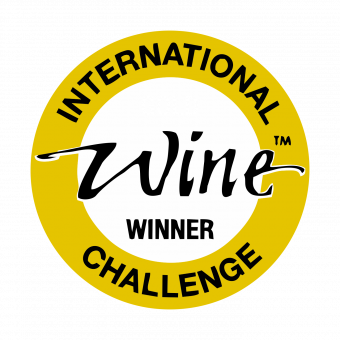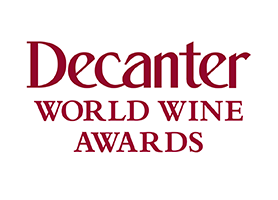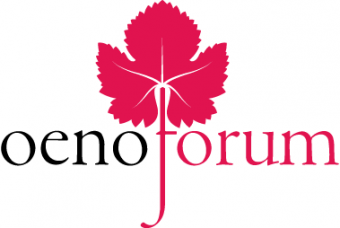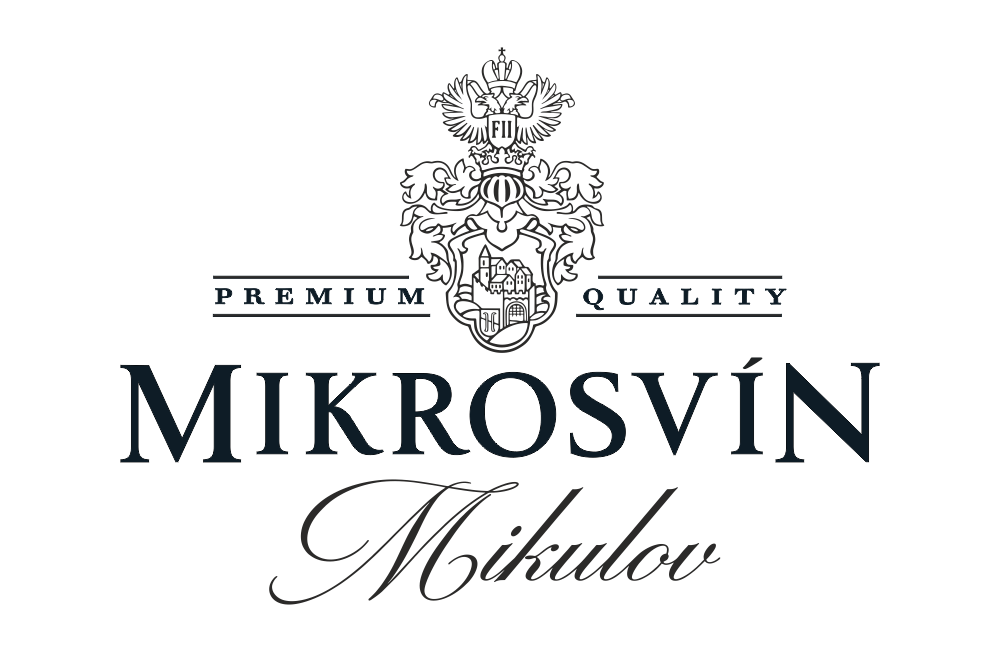Život vinice a vinaře
Poznejte rok ve vinici i ve sklepě.
The work of a winemaker is a demanding year-round one.
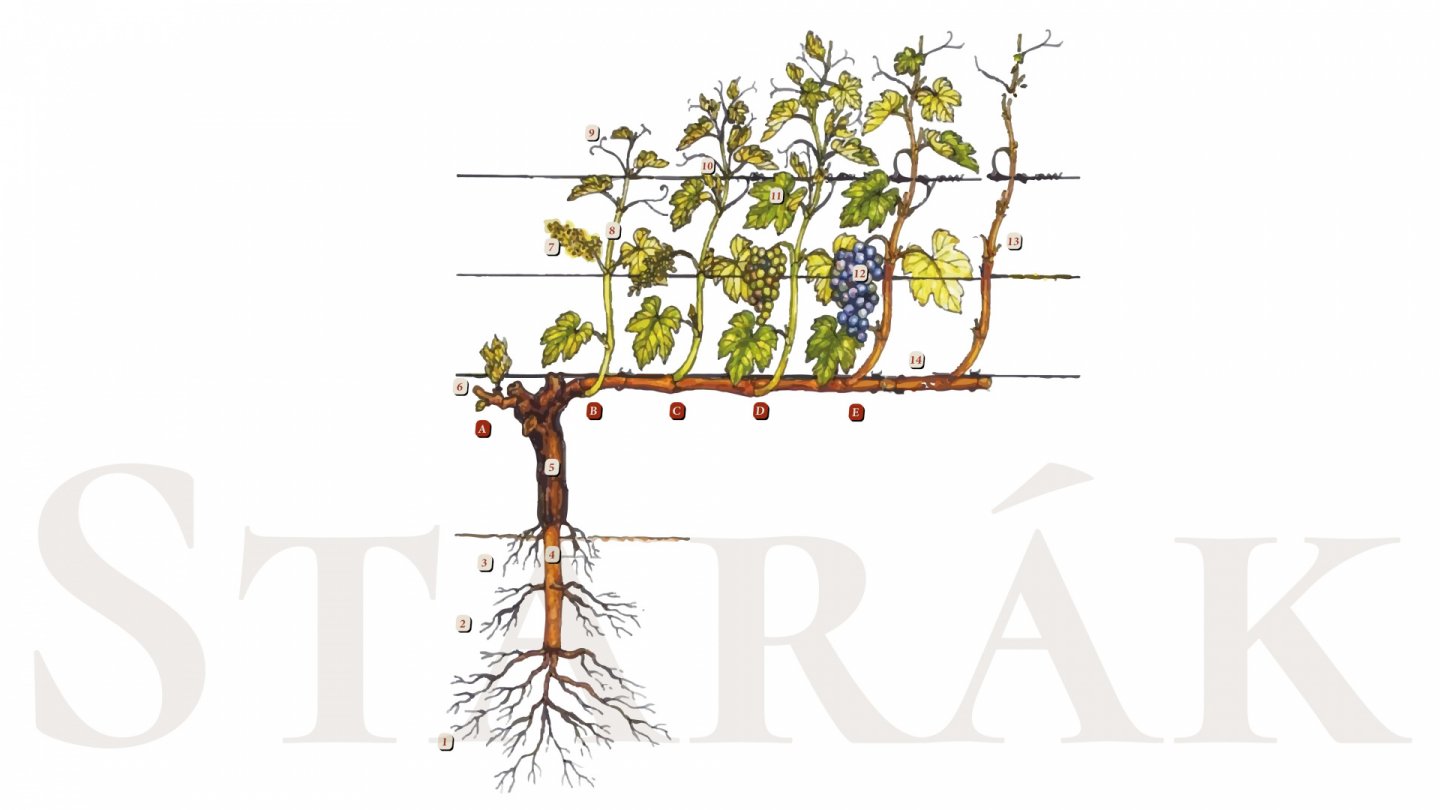
Život vinice a vinaře
Práce vinaře je náročná celoroční práce. I když se nic ve sklepě neděje, tak je potřeba pečovat o vinohrad a opačně. Většinou však má vinař důležité úkoly na obou místech a v tu chvíli se stává mistrem v organizování a plánování.
The life of the vineyard and the winemaker. The work of a winemaker is a demanding year-round one. Even if nothing is happening in the cellar, the vineyard must be cared for and vice versa. Usually, however, the winemaker has important tasks in both places, and at that moment, he becomes a master in organizing and planning.
Leden - březen
Vinice sice v tomto čase spí, ale vinohradník už zimním řezem určuje množství hroznů, které réva vyprodukuje. Její množství by totiž nemělo být na úkor kvality. Po odstranění části loňských letorostů má možnost opravit opěrnou konstrukci a dvojdrátí. Následně je potřeba tažně poohýbat a povázat. Ve sklepě je to období, kdy se finalizuje mladé víno. Víno se filtruje a připravuje na lahvování a etiketaci. Také se rozbíhají soutěže vín, které jsou pro vinaře referencí o tom, zdá víno vyrobil dobře.
January - March. Although the vineyard is asleep at this time, the winegrower has already determined the amount of grapes the vine produces by winter pruning. Its quantity should not be at the expense of quality. After removing part of last year‘s shoots, he has the opportunity to repair the supporting structure and double wire. Then, they must be flexibly bent and tied. This is the period when the young wine is finalized in the cellar. The wine is filtered and prepared for bottling and labelling. There are also wine competitions, which are a reference for winemakers about how well the wine seems to have been produced.
Duben
Jakmile réva vyraší, mohou ji ohrozit ranní mrazy, a tak se řada vinařů snaží své vinohrady ochránit rozděláváním ohňů nebo použitím speciálních hořáků či svící.
April. Once the vine grows, it can be threatened by the morning frosts, so many winemakers try to protect their vineyards by lighting fires or using special burners or candles.
Květen - Červen
Čistění kmenů je první pracovní operací po vyrašení vinné révy, protože ze spících oček na kmeni raší letorosty, které nejsou žádoucí a kmínek se musí ručně očistit, aplikuje se první ochrana proti perenospoře a padlí.
May - June. Cleaning the stems is the first work operation after the vines have been planted because the dormant buds on the stem sprout shoots that are not wanted, and they must be cleaned by hand, First spray application against downy mildew and powdery mildew are made.
Červen - Červenec - Srpen
Od léta začíná soubor tzv. zelených prací. U rostoucích letorostů musí vinohradník provést podlom, tzn. odstranění přebytečných letorostů, zastrčit mladé letorosty mezi dvojdrátí tak, aby vznikla co největší osluněná plocha listů pro správnou fotosyntézu. Potom následuje jejich osečkování nad horním dvojdrátím a taky mulčování či kosení meziřádků. Fyzicky náročným úkolem bylo v minulosti okopávání půdy kolem kmínku, v dnešní době se většinou využívá už mechanizace. Odstraňováním hlavních listů a zálistků v zóně hroznů se zvyšuje odolnost vůči houbovým chorobám a hnilobě. Při dozrávání hroznů se listy v zóně hroznů odstraňují zase pro zvýšení vyzrálosti hroznů. Aplikuje se ochrana proti peronospoře a padlí doplněna o ochranu proti botritidě.
June - July - August. The so-called green work. Growing shoots make a vine break, i.e. removing excess shoots, tucking young shoots between the double wire to create the largest possible sunlit area of leaves for proper photosynthesis. This is followed by cutting them over the upper double wire and mulching or mowing between the rows. In the past, physically demanding tasks were digging the soil around the stem; nowadays, this is mostly mechanized. Removing the main leaves and leaflets in the grape zone increases resistance to fungal diseases and rot. As the grapes ripen, the leaves in the grape zone are removed again to increase the ripeness of the grapes. The spray appliaction against downy mildew and powdery mildew is completed with spray against botrytis.
Srpen - říjen
Sklizeň hroznů je poslední pracovní operací ve vinici v aktuálním vegetačním prostředí. Hrozny je možné sklízet ručně, částečně nebo plně mechanizovaným způsobem. Nejšetrnějším způsobem zpracování je ruční sběr, který je však ekonomicky náročnější oproti mechanickému. Důležité je hrozny dopravit do sklepa co nejrychleji a bez poškození. Hrozen se pak ve sklepě musí oddělit od třapin a podrtit, aby se šťáva v dužině oddělila od pevných částí bobule. Následně vinař zakvasí tento sladký mošt kvasinkami, které promění cukry na alkohol a oxid uhličitý. Při tomto procesu vzniká mnoho jiných látek, které ovlivňují chuť a vůni vína a také teplo. Úlohu vinaře je celý tento proces kontrolovat, neustále degustovat vznikající víno, aby výsledný charakter vína byl podle jeho představ.
August - October. Grape harvesting is the last operation in the vineyard in the current vegetation environment. The grapes can be harvested by hand, in part or in a fully mechanized way. The most gentle way of processing is manual collection, which is, however, more economically demanding than mechanical. It is important to transport the grapes to the cellar as quickly as possible and without damage. The grapes must then be separated from the tufts in the cellar and crushed so that the juice in the flesh separates from the solid parts of the berry. Subsequently, the winemaker ferments this sweet must with yeast, which converts sugars into alcohol and carbon dioxide. During this process, many other substances are formed that affect the taste and aroma of the wine as well as the heat. The role of the winemaker is to control the whole process, to constantly taste the emerging wine so that the final character of the wine is according to his ideas.
Listopad
Modrý hrozen při výrobě červených vín potřebuje ve vinici delší čas na dozrání a sbírá se později. Jeho výroba je odlišná od výroby bílých a růžových vín tím, že nekvasí šťáva, tedy mošt, ale tzv. rmut. Rmut vznikne pomletím celých bobulí hroznu. Při kvašení jsou přítomné i pevné částice jako jsou slupky, z kterých získá červené víno barvivo a semínka, z kterých se do vína vyextrahují taniny. Po dokvašení následuje školení vína, což je soubor různých úkonů, jako jsou např. stáčení, při kterém vinař odděluje čiré víno od kvasničného kalu usazeného na dně nádoby. Následně je potřebné dát vínu čas na dozrání. Červená vína je možné nechat dozrávat několik měsíců v dřevěných sudech. Pro výrobu plnějších bílých vín může vinař víno míchat na kvasničných kalech.
November. When producing red wines, the blue grape needs a longer time to ripen in the vineyard and is harvested later. Its production is different from white and rosé wines in that it does not ferment the juice, i.e. must, but the so-called mash. The mash is formed by grinding whole grapes. During fermentation, solid particles are also present, such as skins, from which red wine is obtained by dye and seeds, from which tannins are extracted into the wine. The final fermentation is followed by wine training, which is various tasks such as bottling, in which the winemaker separates the clear wine from the yeast sludge deposited at the bottom of the vessel. Then the wine must be given time to mature. Red wines can be aged for several months in wooden barrels. To produce a fuller white wines, the winemaker can mix the wine on yeast sludge.
Prosinec
Podzim i předvánoční čas je obdobím plným degustací, ochutnávek, vinobraní a večírků, na kterých vinař se svým vínem nemůže chybět. Protože nejhezčím závěrem celého procesu je, když víno lidem chutná a dokáže jim zpříjemnit chvíle.
December. Autumn and the pre-Christmas time is a period full of tastings, wine tastings, vintages and parties, at which the winemaker cannot leave out his wine because the most beautiful end of the whole process is when the wine tastes good to people and can make their moments more pleasant.
Leden - listopad
Od začátku roku až po dozrávání musí vinohradník zabezpečit zdravý stav vinné révy a jejích plodů. Révu může napadnout a poškodit mnoho chorob a škůdců. To pak ovlivňuje negativně životnost vinice, výnos a kvalitu hroznů. Dnešní ochrana je nastavená na principech ekologického vinohradnictví s maximálně šetrným přístupem k okolnímu prostředí a zároveň na zásadách prognózy a signalizace.
January - November. From the beginning of the year until maturation, the vineyard must ensure the healthy condition of the vine and its fruits. The vine can be attacked and damaged by many diseases and pests. This then negatively affects the life of the vineyard, yield and quality of grapes. Today‘s protection is set on the principles of organic viticulture with the most gentle approach to the environment and at the same time on the principles of forecasting and signalling.
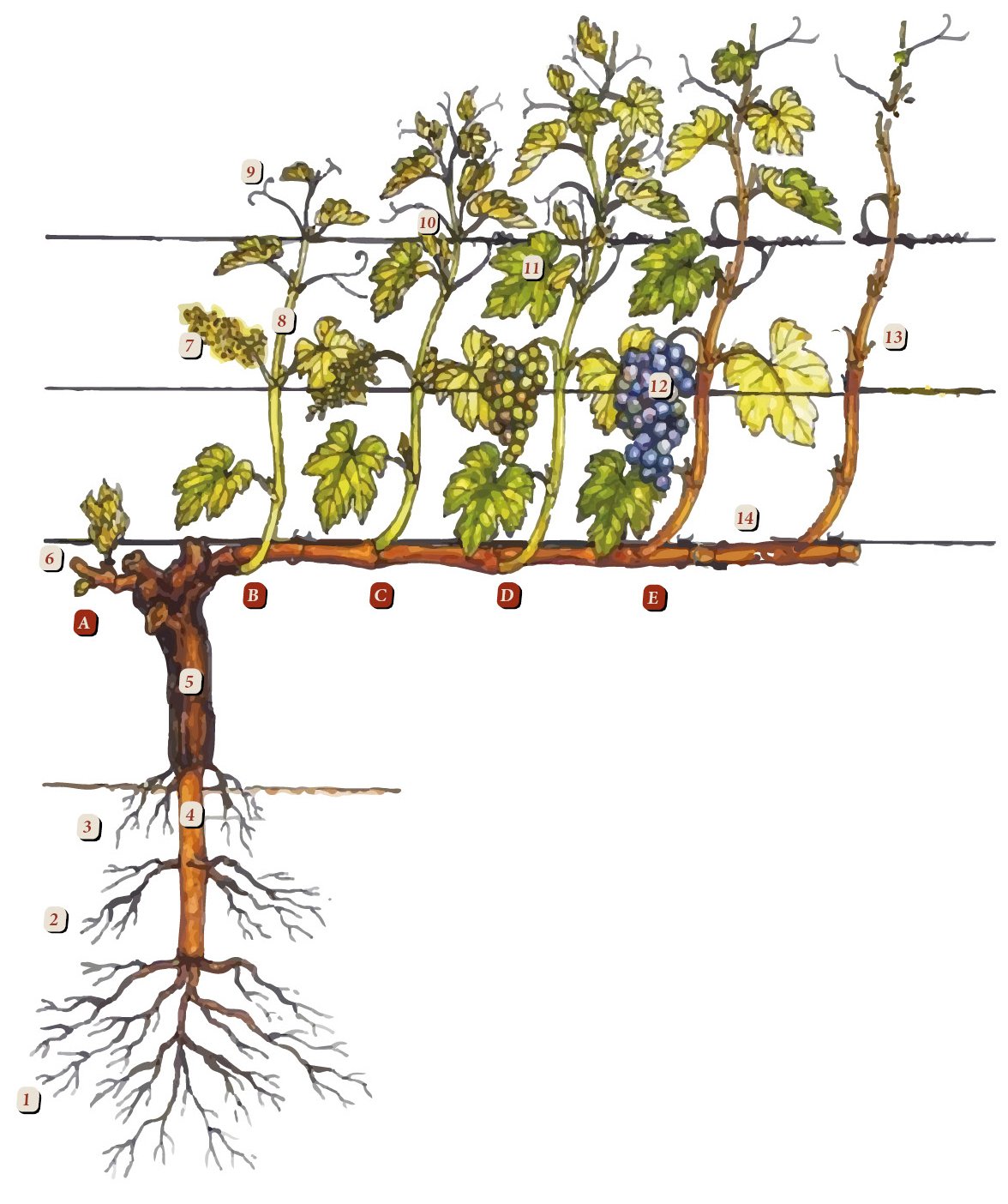
Popis keře révy vinnéMorphology of a grape vine 1 - kořeny patní / feeder root 2 - kořeny středové / lateral roots 3 - kořeny rosné / surface root 4 - kořenový kmen / tap root 5 - kmen / trunk 6 - čípek / spur 7 -složené květenství / inflorescences 8 - letorost / shoot 9 - úponek / tendril 10 - fazoch (zálistek) / lateral shoot 11 - list / leaf sg. - Leaves pl. 12 - hrozen / grape bunches 13 - očko / bud 14 - tažeň / cane |
Růstová stádia révy vinnéLifecycle of a grape vine A - rašení a počátek růstu letorostů bud burst B - kvetení C - nasazování bobulí D - zaměkání bobulí E - zrání hroznů |

